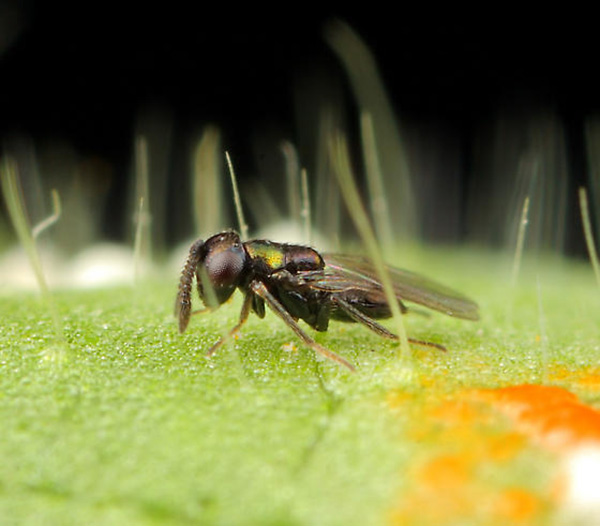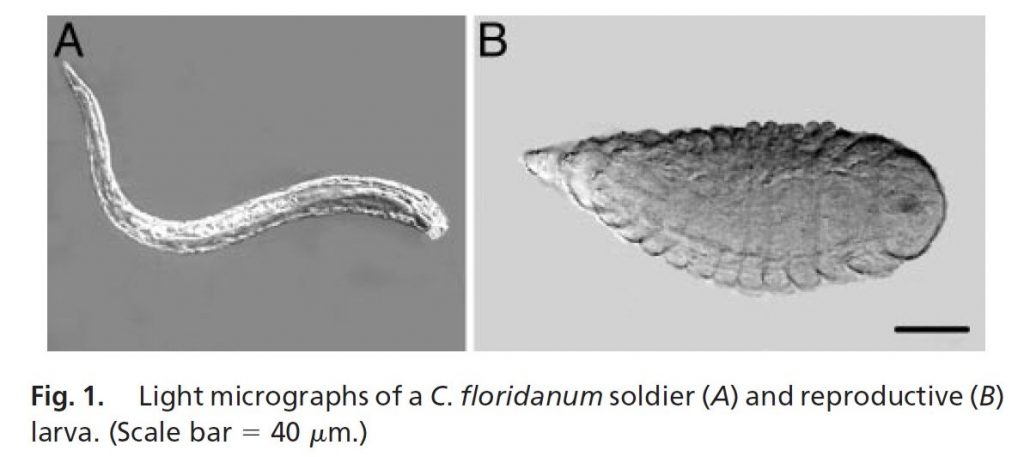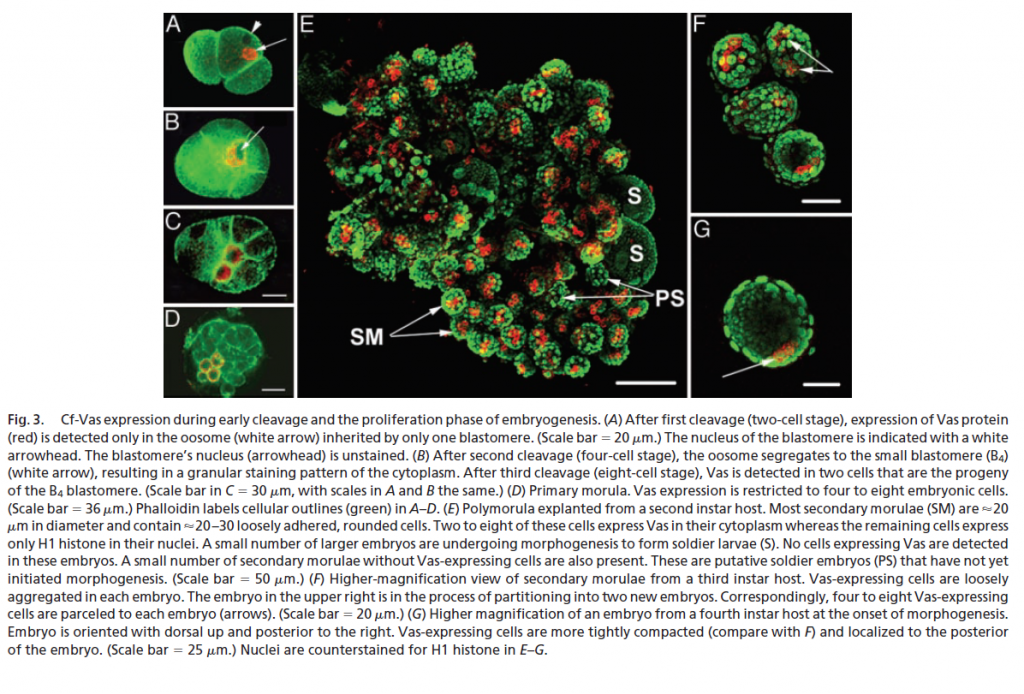Multi wasp
The more I find out about insect biology the more bamboozling it becomes. Case in point is the reproductive biology of some of the smallest insects on the planet – parasitoid wasps that specialise in plundering the eggs of other insects. These wasps are the merest specks, with the largest ones being only around 1mm long, but what they lack in size they more than make up for in their extraordinary diversity. The intricacies of the biology of most of these animals is unknown, but a few species have been fairly well scrutinised as they have potential as biological control agents.

Exactly how these tiny wasps go about taking over their host is extraordinary. Many of them are the nemesis of certain moths and when the female wasp finds a suitable host egg she lays a single egg inside. In the most extreme cases, the egg, rather than just hatching into a single larva, goes through a remarkable sequence that sees this single egg become different types of larvae and eventually thousands of new wasps.
In the species that have been studied the action begins in the host egg, but continues as the host larva develops. The host finally succumbs after it has spun a cocoon. Many other parasitoid wasps (e.g. chalcidoid and Platygastridae) complete their entire development within the host egg and are known to be polyembryonic .

The single wasp egg divides again and again to form a mass of undifferentiated cells called a polygerm suspended in the developing host embryo. Eventually this polygerm splits into discrete clusters of cells, each of which will become a wasp larva. Most of these wasp larvae and ‘normal’ and will go onto ravage the host tissues, pupate and escape from the remnants of their food as new wasps. A small proportion – about 10% in the species that have been studied – are special and develop faster and differently than the ‘normal’ clones. These special larvae are anatomically simple, but are equipped with fearsome jaws. They are soldiers and they wander through the host to dispatch the eggs and larvae of other parasitoids that have laid eggs in the same host egg, even other clones of the same species. Crucially, these soldier larvae don’t pupate and will never give rise to new wasps. They are completely disposable and most of them will be dead by the time the normal larvae gorge on the host tissues.





The fate of each cluster of polygerm cells depends on whether they have germ cells or not. Those with germ cells become normal larvae and eventually wasps. Those without become dead-end soldiers whose sole task is to rid the habitat of competitors. Remember though that all these larvae are clones, so it’s not as though one individual is sacrificing itself for a genetically different individual.

In some cases, this type of polyembryonic development can give rise to 3,000 wasp larvae from a single egg. These parasitoids are tiny and limited in the number of eggs they can produce, so this strategy allows them to get around this limitation. It also allows these species to adjust their brood size to the resources available.
Further reading
Cruz, Y. P. 1981. A sterile defender morph in a polyembryonic hymenopteran parasite. Nature 294: 446-447.
Cruz, Y. P. 1986a. Development of the polyembryonic parasite Copidosomopsis tanytmemus (Hymenoptera: Encyrtidae). Ann. Entomol. Soc. Am. 79: 121-127.
Cruz, Y. P. 1986b. The defender role of the precocious larvae of Copidosomopsis tanytmemus Caltagirone (Encyrtidae, Hymenoptera). J. Exp. Zool. 237: 309-318.
Donnell, D. M. , Corley, L. S., Chen, G. and Strand, M. R. 2004. Caste determination in a polyembryonic wasp involves inheritance of germ cells. Proc. Natl. Acad. Sci. USA 101: 10095–10100.
Grbic, M. and Strand, M. R. 1992. Sibling rivalry and brood sex ratios in polyembryonic wasps. Nature 360: 254-256.
Grbic, M. and Strand, M. R. 1998. Shifts in the life history of parasitic wasps correlate with pronounced alterations in early development. Proc. Natl. Acad. Sci. USA 95: 1097-1101.
Grbic, M., Nagy, L. M., Carroll, S. B. and Strand, M. 1996. Polyembryonic development: insect pattern formation in a cellularized environment. Development 122: 795-804.
Grbic, M., Nagy, L. M., and Strand, M. R. 1998. Development of polyembryonic insects: a major departure from typical insect embryogenesis. Dev. Genes Evol. 208: 69-81.
Segoli, M., Bouskila, A., Harari, A. R. & Kaesar, T. Developmental patterns in the polyembryonic parasitoid wasp Copidosoma koehleri. Anthropod Structure and Development 38, 84–90 (2009).
Segoli M, Harari AR, Rosenheim JA, Bouskila A, Keasar T. The evolution of polyembryony in parasitoid wasps. J Evol Biol. 2010;23(9):1807–19.
Strand, M. R. and Grbic, M. 1997. The development and evolution of polyembryonic insects. Current Top. Dev. Biol. 35: 121-159.
Zhurov, V, Terzin, T. and Grbić, M. 2004. Early blastomere determines embryo proliferation and caste fate in a polyembryonic wasp. Nature 43: 764-769.
Leave a Reply